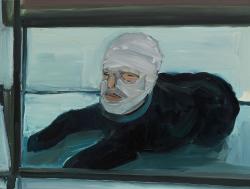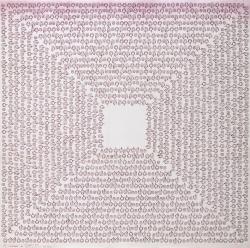Fabian Marcaccio’s Paintant Stories is an exceptional work in every way. Over a length of approximately one hundred meters the artist unfolds a universal panorama of contemporary existence, with all its contradictions and conflicts.
Fabian Marcaccio was born in 1963 in Rosario, Santa Fe, Argentina, and has lived since 1985 in New York. Right from the beginning, Marcaccio has moved between the genres in art. But the point of departure for him is always painting; from there he reaches out in various ways into concrete space, culminating in monumental installations and works of sculptural dimensions. And right from the outset his painting was also presented by means of other media: up until the mid-1990s he worked primarily with the technique of collography, a kind of monotype in which relief forms are transposed to a picture support by means of a printing press.
In terms of content, these abstract configurations reveal that the artist has given deep consideration to the paradigms of modern painting. He frequently returns for instance to the theme of the brushstroke as a metaphor and relay; it does not appear as some ingenious gesture, but rather to be frozen, as in a comic, and undergoes a host of mutations. Marcaccio brought together many of these pictorial codes, which serve as building bricks for his paintings, in the publication 661 Conjectures for a New Paint Management 1989–2004 (2004). In addition, he freed himself from the traditional rectangular system of the painting by partly shaping the stretcher in such a way that it twists round into the surface of the canvas. Painting and picture ground, always strictly divided into the visible and invisible, enter into surprising liaisons in his works. And he even allows the painting and the wall to interact in a way that creates environmental configurations.
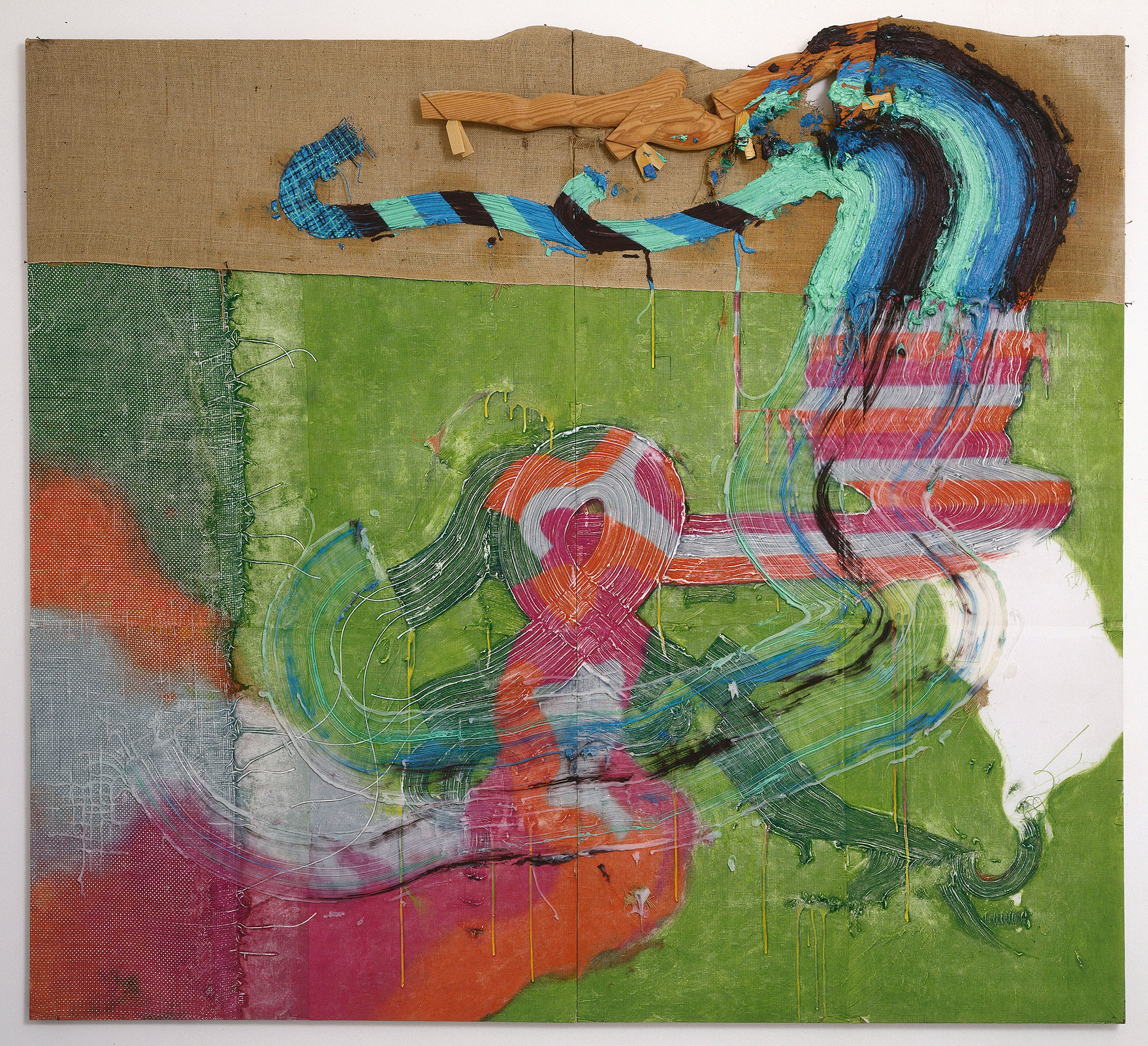
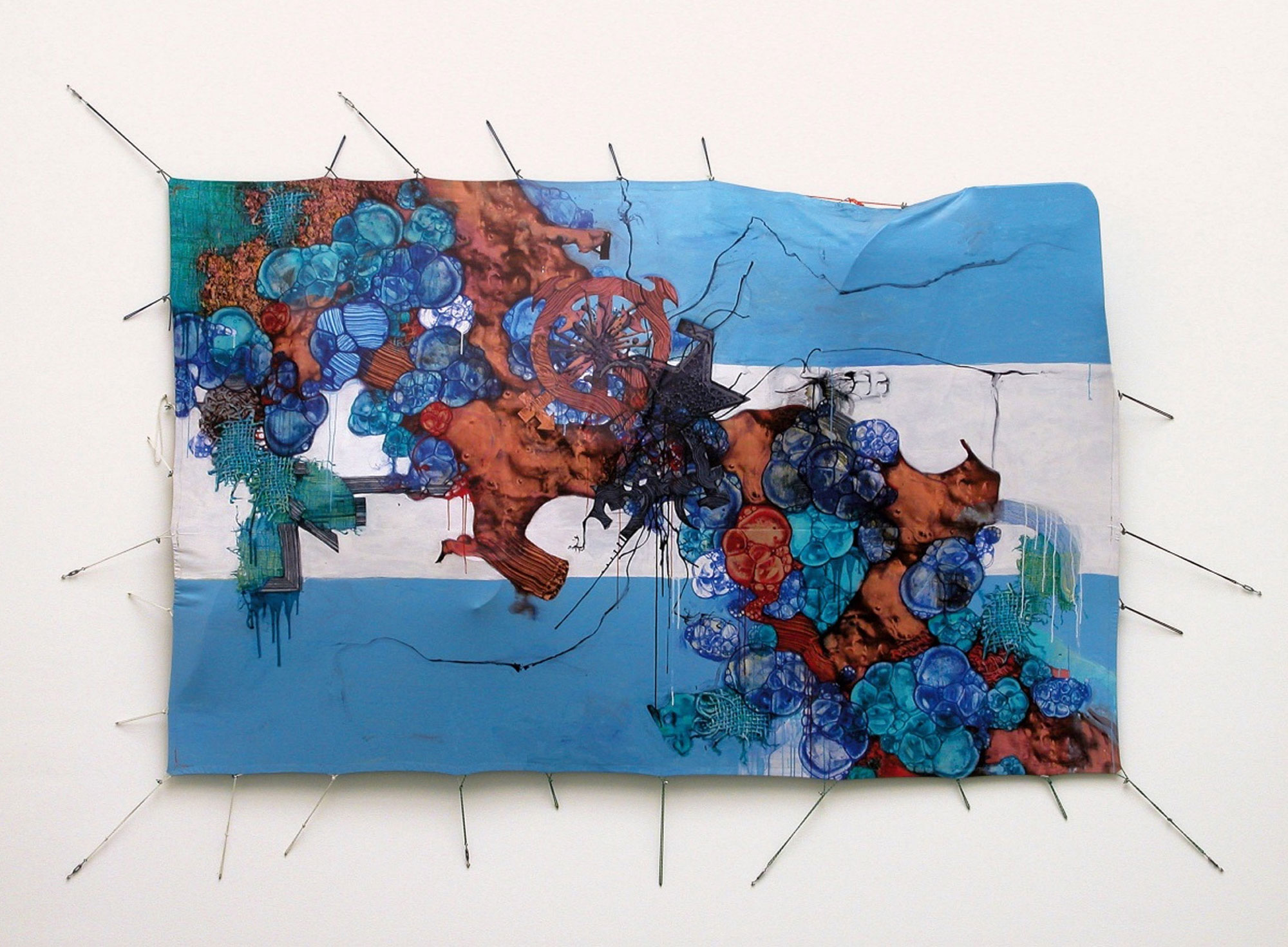
Since the middle of the 1990s he has produced increasing numbers of works involving digitally processed photographs, which he mostly finds on the Internet. The possibility of scanning photographic motifs so as to process them with a computer graphics application and then combining them with plaster, paint and silicone forms, has enabled him to connect with realities in people’s life worlds. Although he had also worked signs and symbols into his earlier abstract configurations, he now adds motifs that would scarcely be conceivable without computer software. And this technology also allows Marcaccio to perform leaps in dimension that were hitherto impossible.












In 2000 Marcaccio created a monumental Environmental Paintant measuring some four metres in height and a hundred metres in length, in which illusionist elements, thickly applied paint and sculptural applications flow visually into one another. This piece, entitled Paintant Stories, was first shown at the Württembergischer Kunstverein Stuttgart and subsequently in slightly modified form at the Kölnischer Kunstverein, Cologne. The work was then acquired at the beginning of 2002 by the Daros Latinamerica Collection and put on display in 2005 in the Daros Museum in Zurich. Marcaccio associates his neologism Paintant with words like “actant, replicant and mutant”—terms that apply as equally to a visual structure that simulates a biomorphic process as to the active role of the viewer. Indeed, the Paintant Stories extend so far into space that the viewer’s body awareness is unavoidably brought into action. Which means the only appropriate way of viewing them is for the beholder to move along in front of the picture sequence, such that the visual elements themselves dictate the speed of the motion: abrupt staccati demand that one slows down, while large stretches of painterly applications prompt acceleration. As a counterpart to the seemingly cinematographic movements in the picture, coupled at times with an extreme illusionism, the viewer has an alternating experience of continuity and discontinuity or, as the artist himself would put it, of “flow” and “cut”—a quite cinematic experience that compares with the camera pan and the edit.
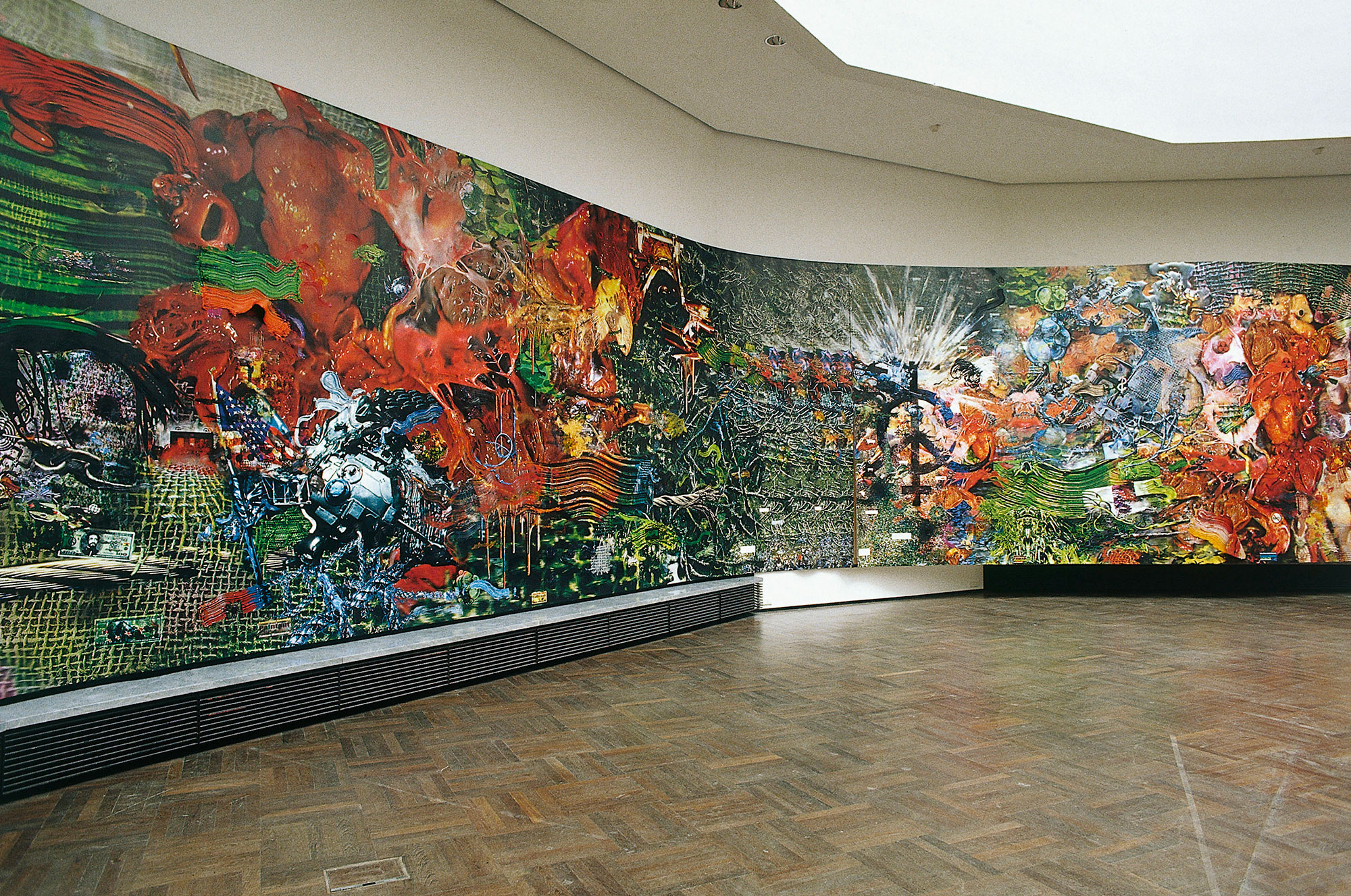

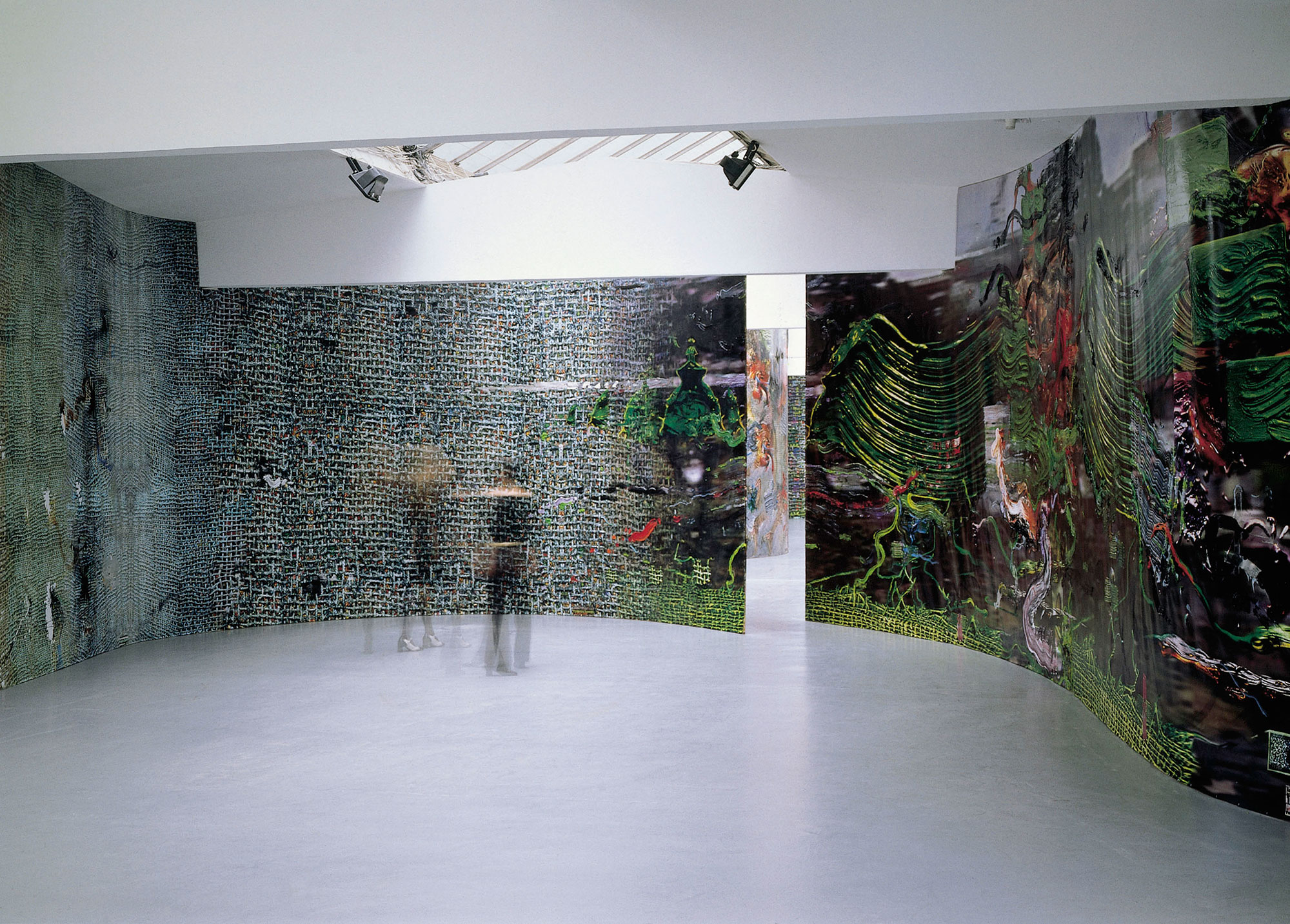
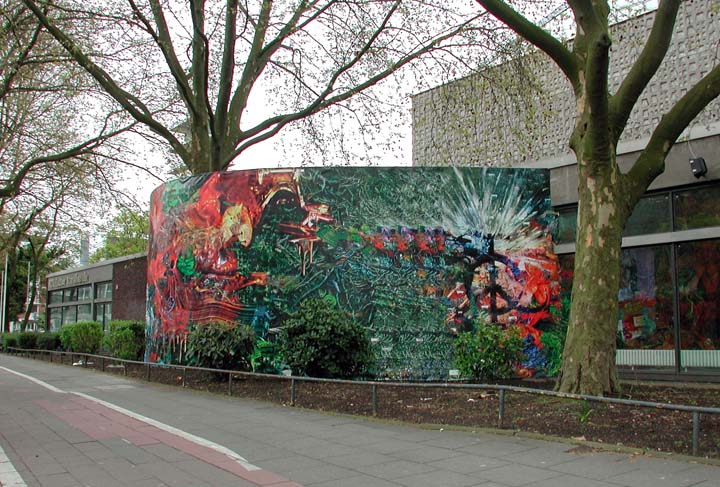
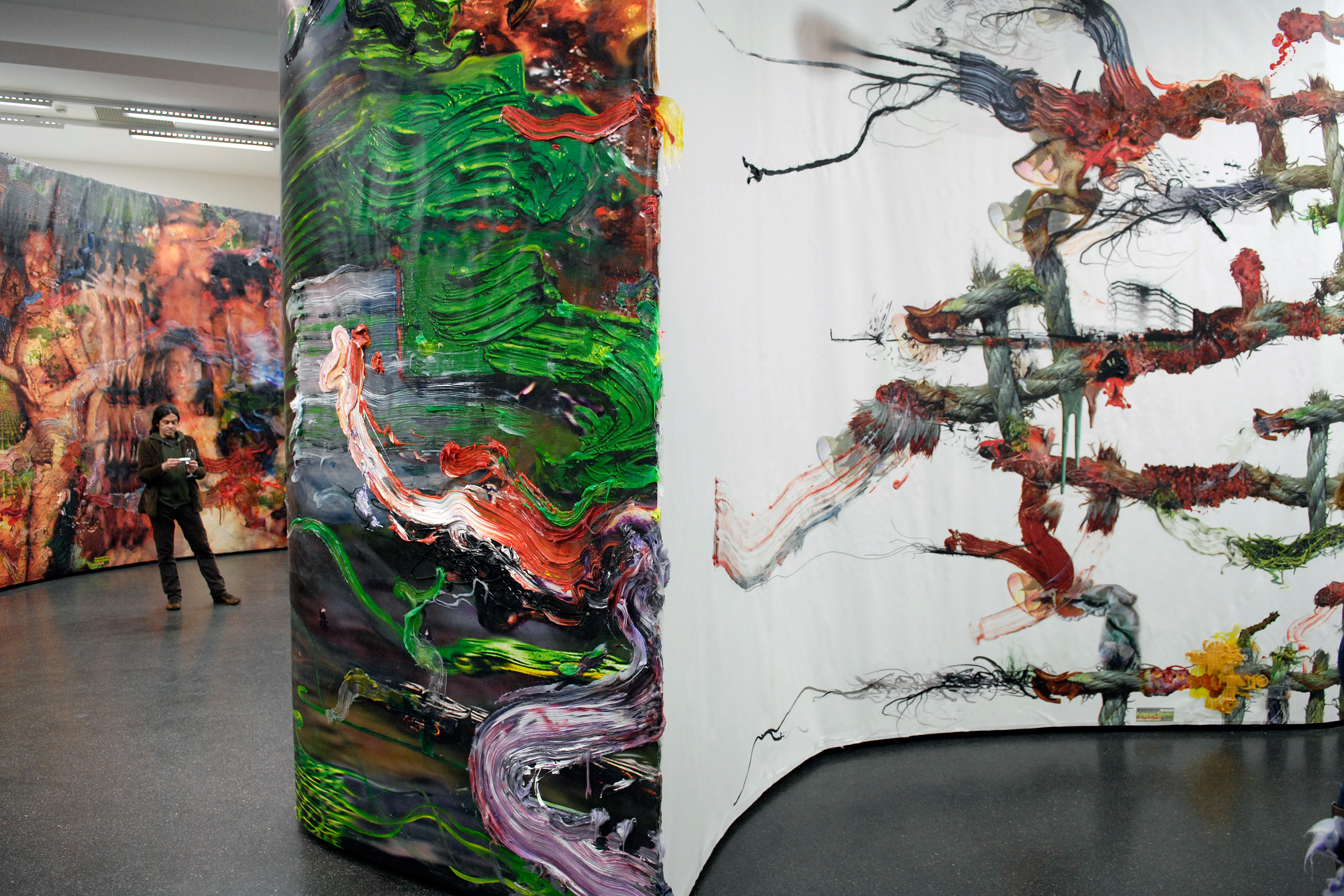
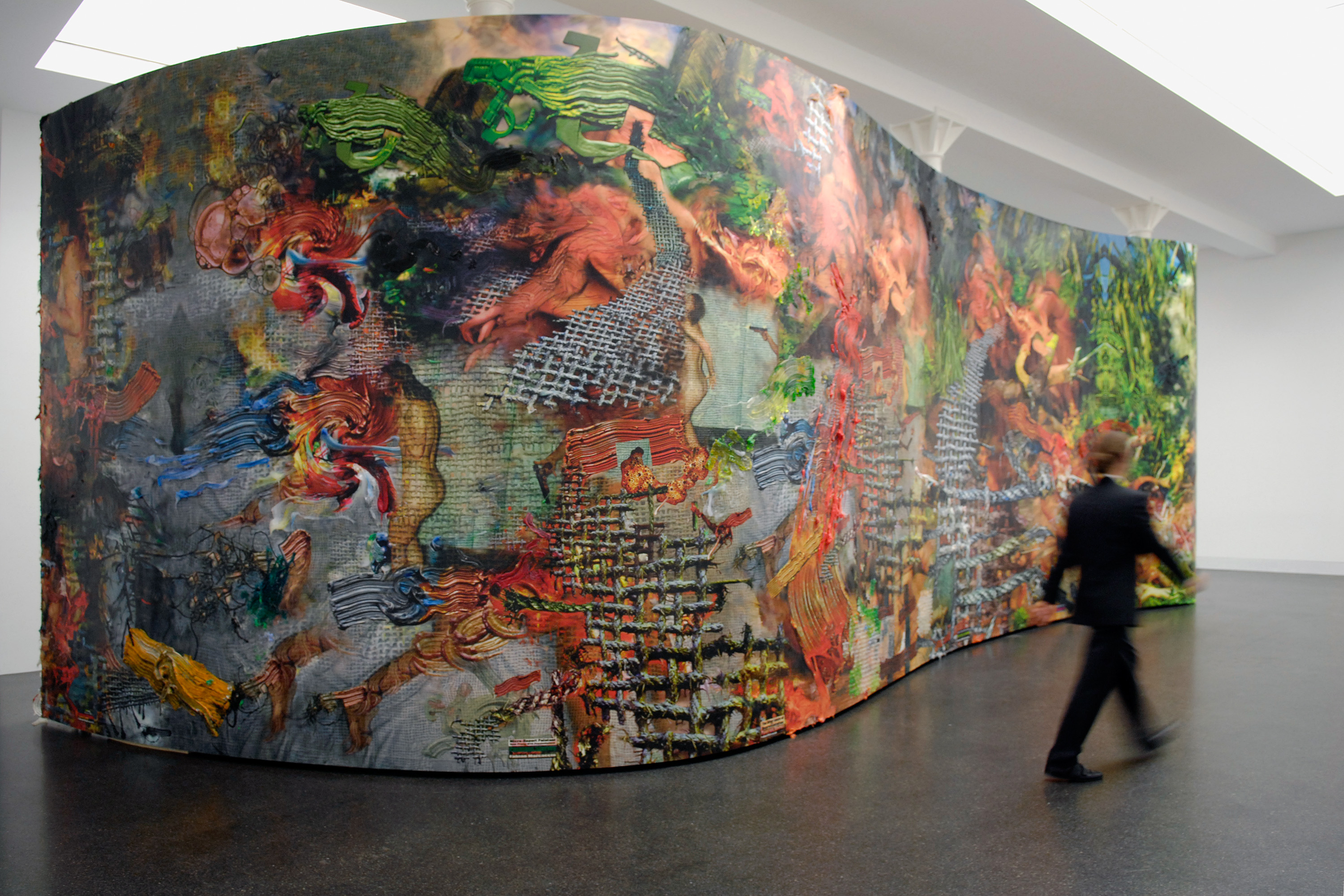
As regards the motifs, at first the Paintant Stories take a self-referential turn and depict the underlying substance of traditional painting: canvas and paint, presented here as woven fabric and brushstrokes. But even in the interstices of the photographically projected fabric the artist has integrated micro-images made up of hybrid political emblems, corporate logos, cars, portraits, technoid weapons and, time and again, pornographic motifs. And during the course of the painting, these flow into larger-than-life depictions of political symbols, orgiastic sex, and scenes of violence—a jungle-like panorama of today’s world in thrall to the media.
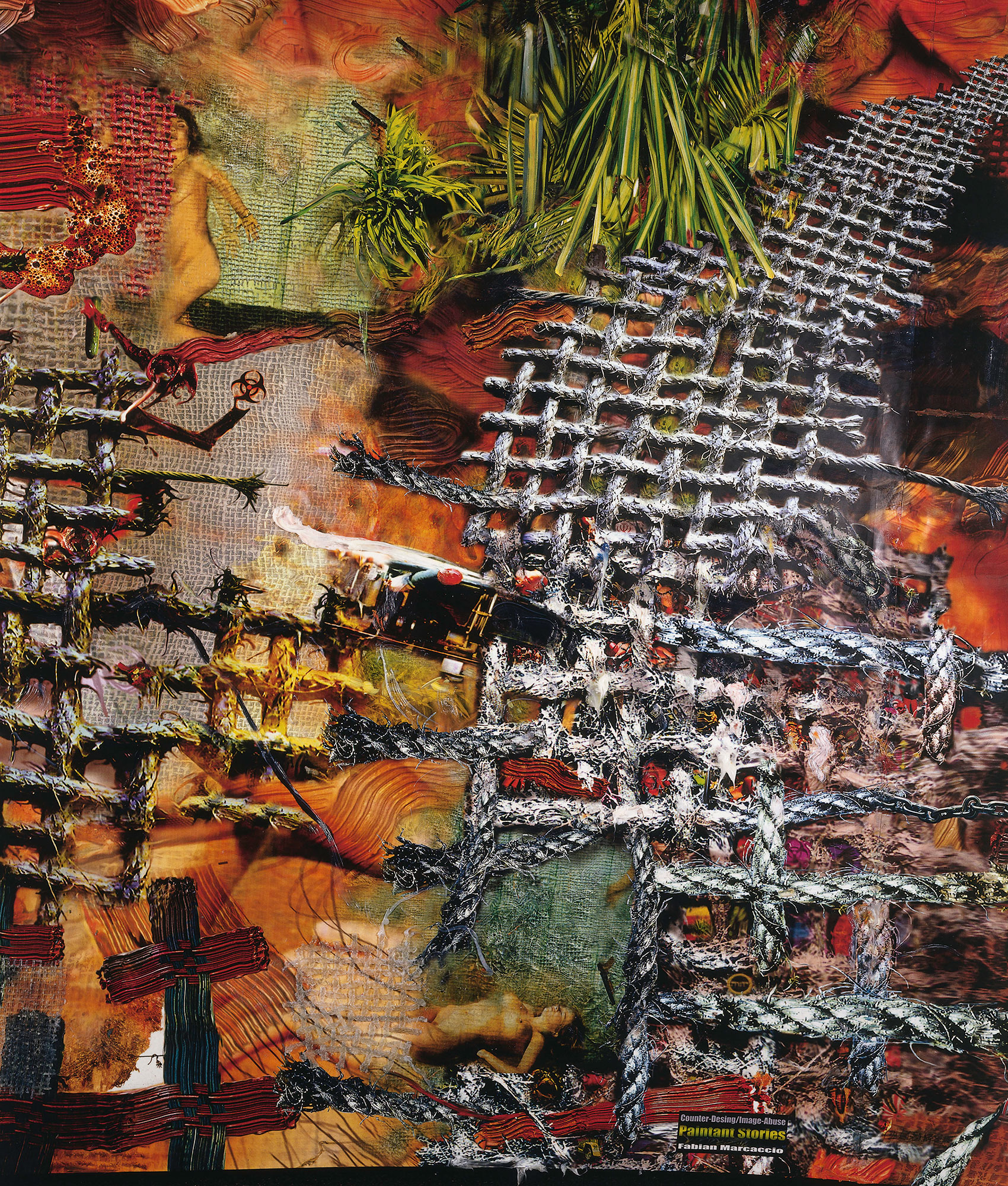
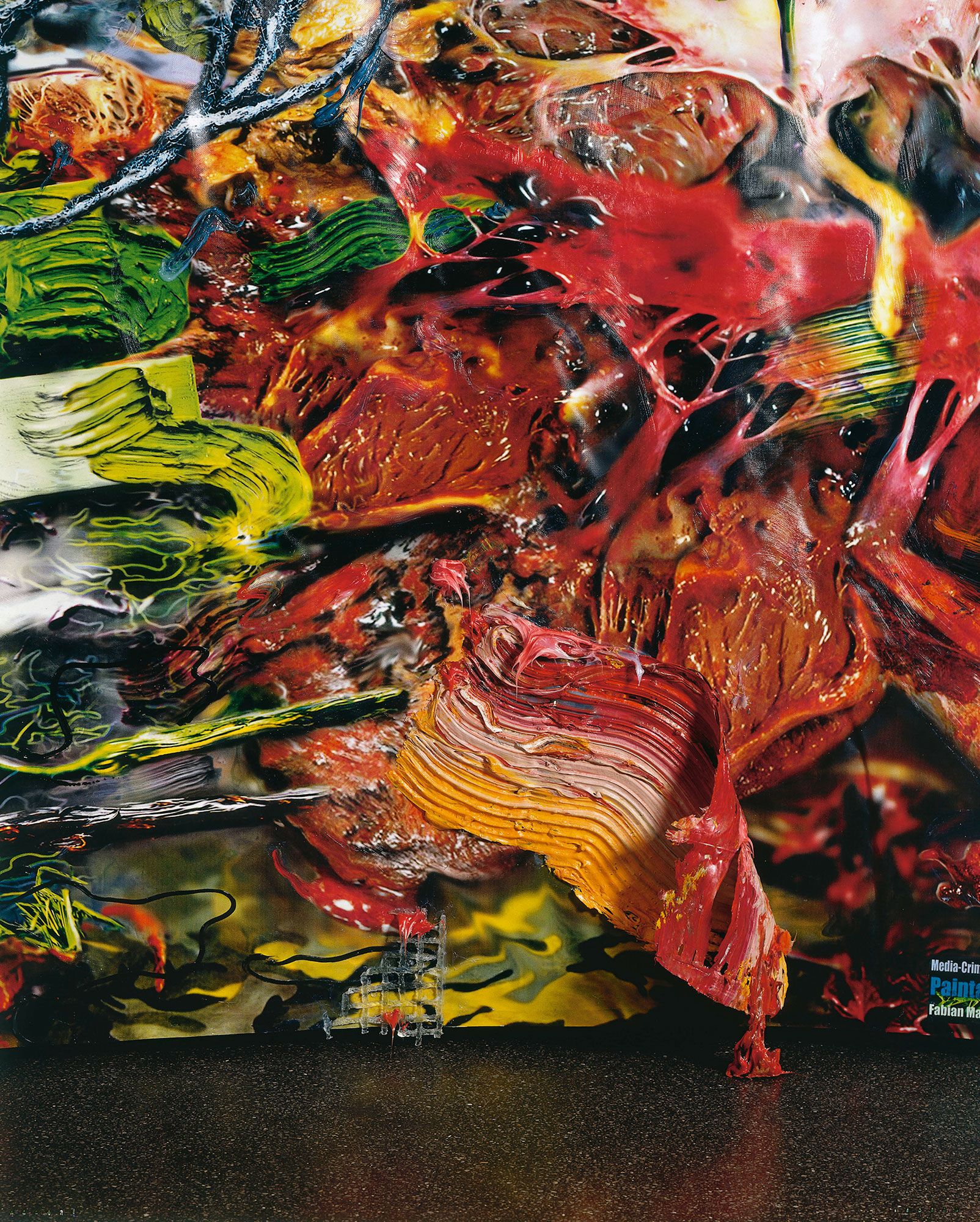
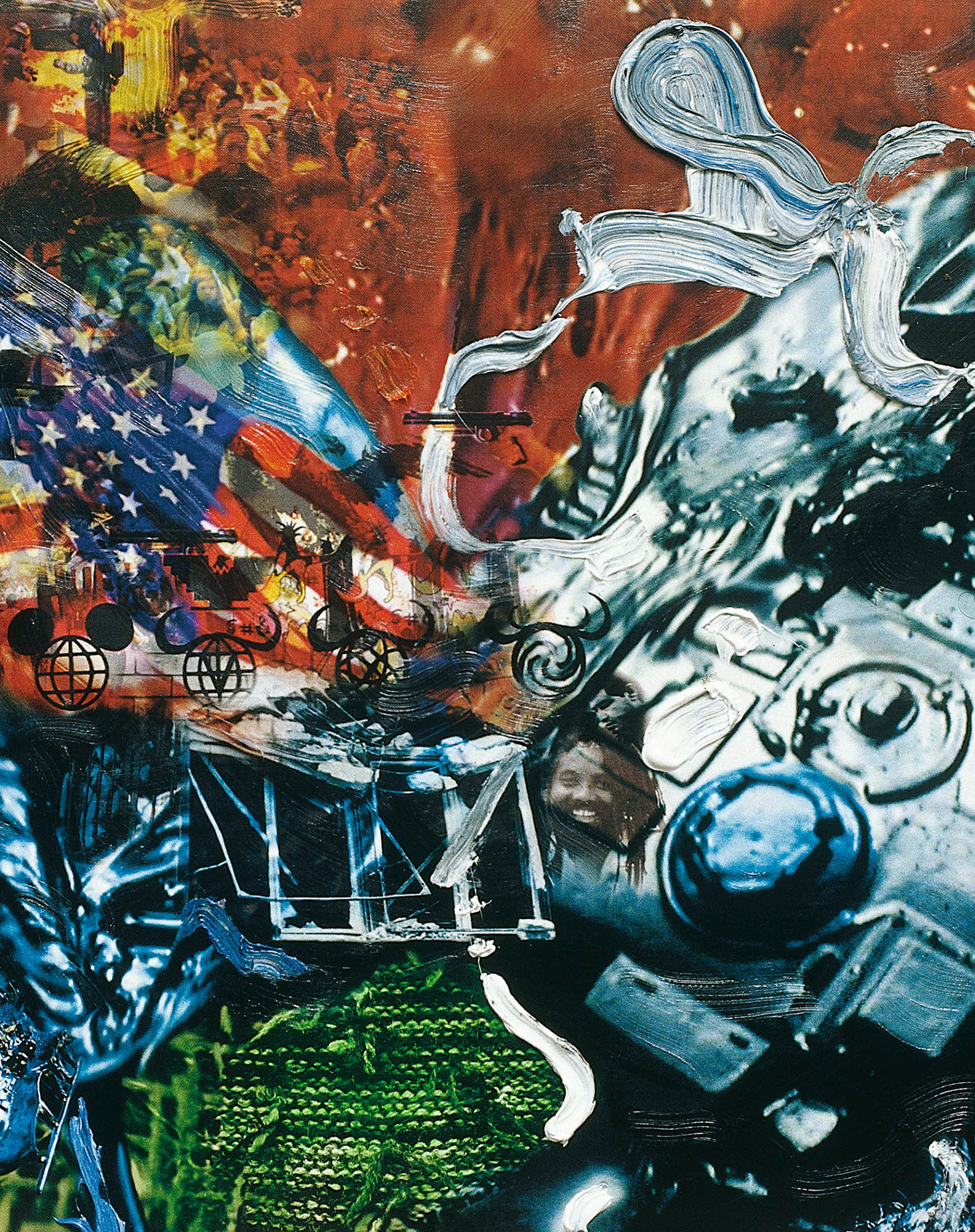

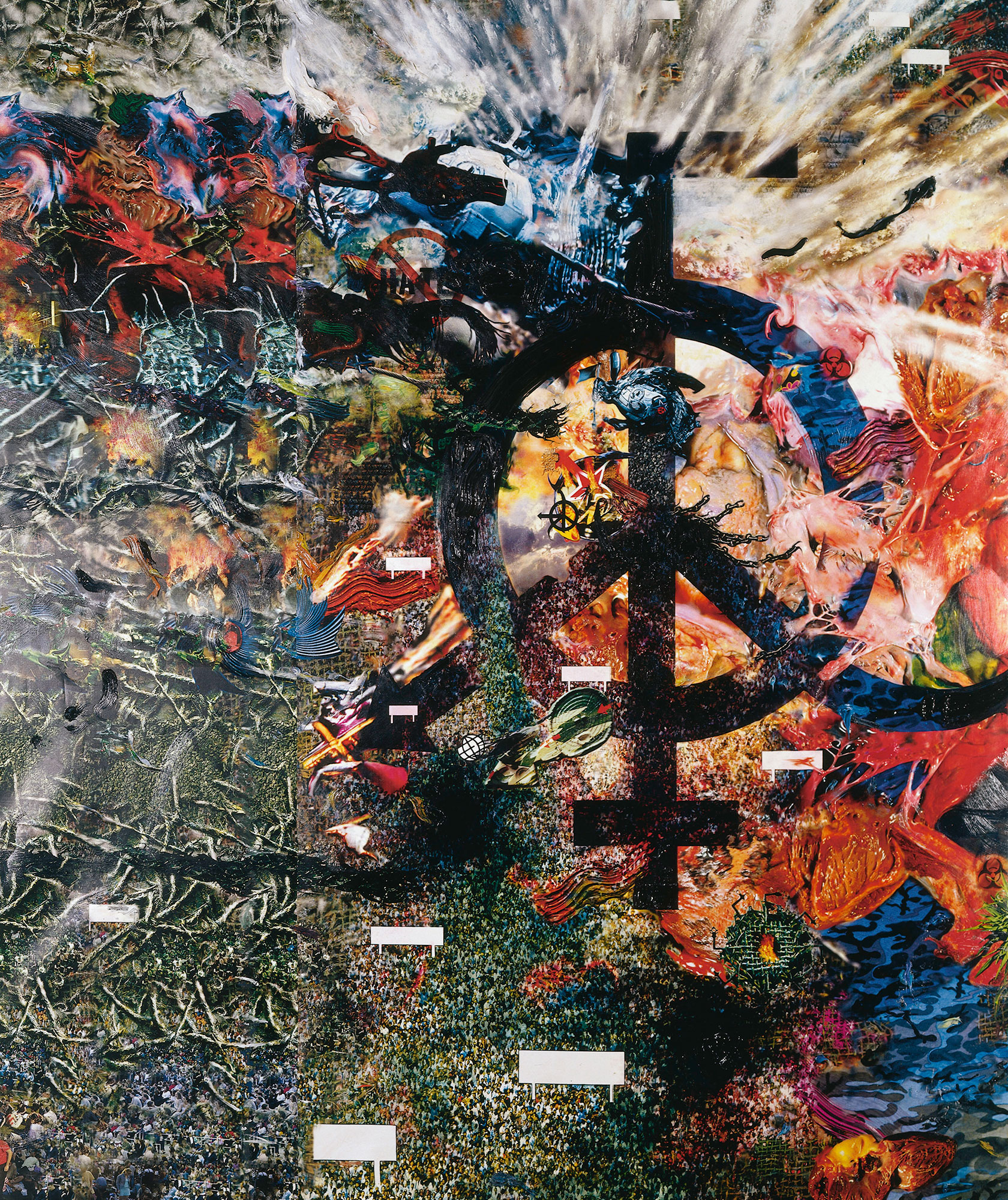

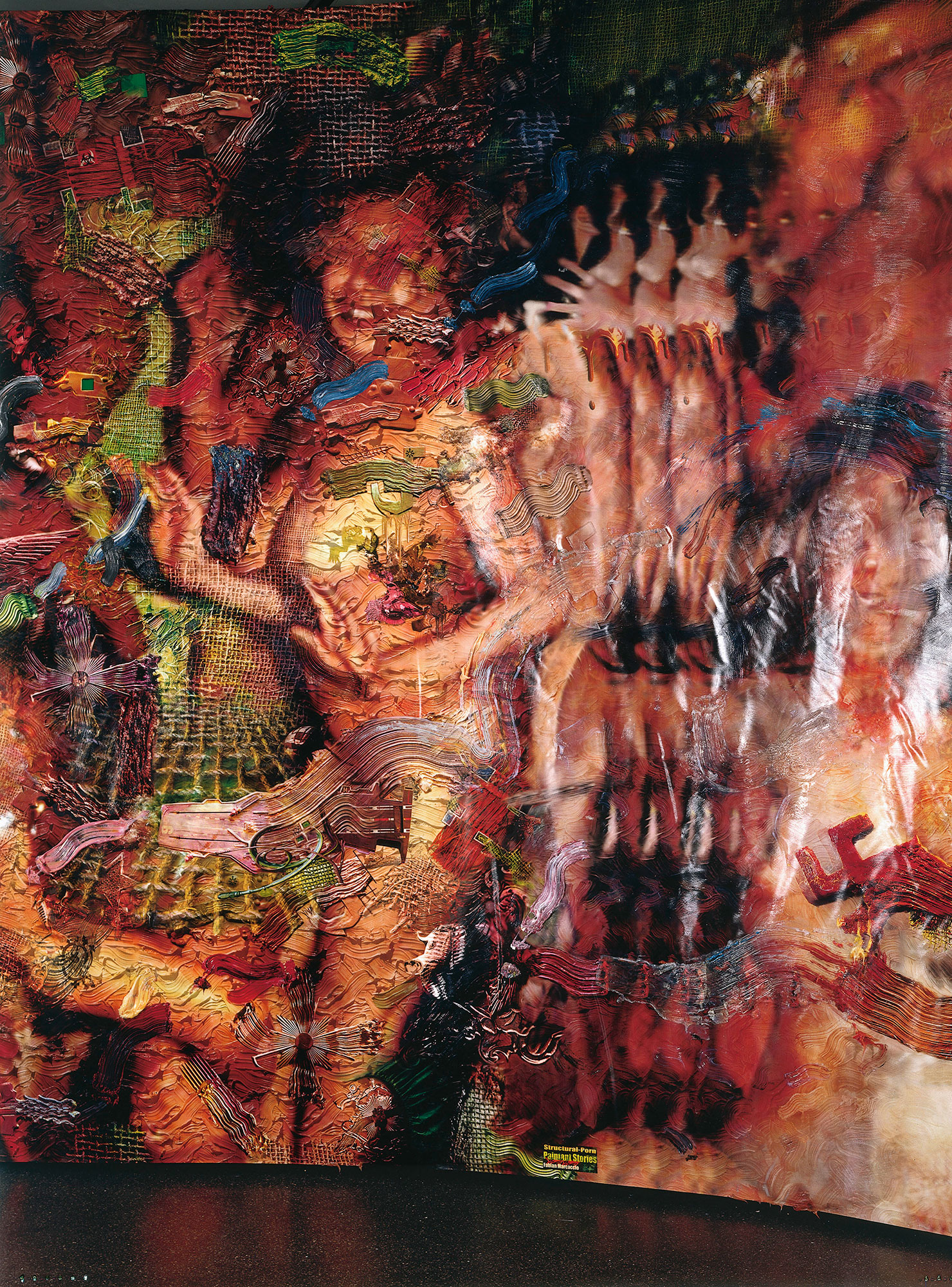
Interesting here is the interplay between collage and montage. While the collage draws the viewer’s attention to the material reality of the artwork through the applications done in paint and coloured silicone, the actual surface of the material withdraws in the montage to become pure depiction, which the artist manages convincingly through digital printing. The collage derives its strength from the breach, the montage from the continuum; in Paintant Stories the two merge together, and in paradoxical fashion, as Marcaccio himself has noted: “Paintant Stories are indexical like a photograph, but literal like a painting. They are flat but hyper-textural. Swift like advertising but slow like analytical painting. Gestural and chaotic but totally constructed and organized. They extended out into space, but they are about time. They come from the multiple heterogeneity of the collage, and move towards a new type of continuous, homogenous integration of the media.” For all the jumps in dimension that develop from the painting’s digital foundations, everything in Marcaccio’s polyfocal universe seems connected with everything, but in such a way that the viewer can never take it in as a whole; his gaze is constantly defocused.
In his recent works from 2011 onward, Marcaccio has performed yet another unexpected turnabout: he has replaced the cipher-like digital network with a real net of hemp ropes and climbing lines. In addition, there is a new viscerality to the way the paint is applied, using a thick mixture of alkyd and coloured silicone. Although at first sight these paintings also look abstract, they are more content-driven than ever before. In a panorama of images, Maracaccio presents here the dark underbelly of US American history and its mentality as he tackles subjects such as the Waco Disaster in Texas, the Falludja massacre in Iraq, and the high school shootings at Columbine in Colorado—a series that has yet to come to an end.
Martin Hentschel 2017 (2014)
(Translated by Malcolm Green)

